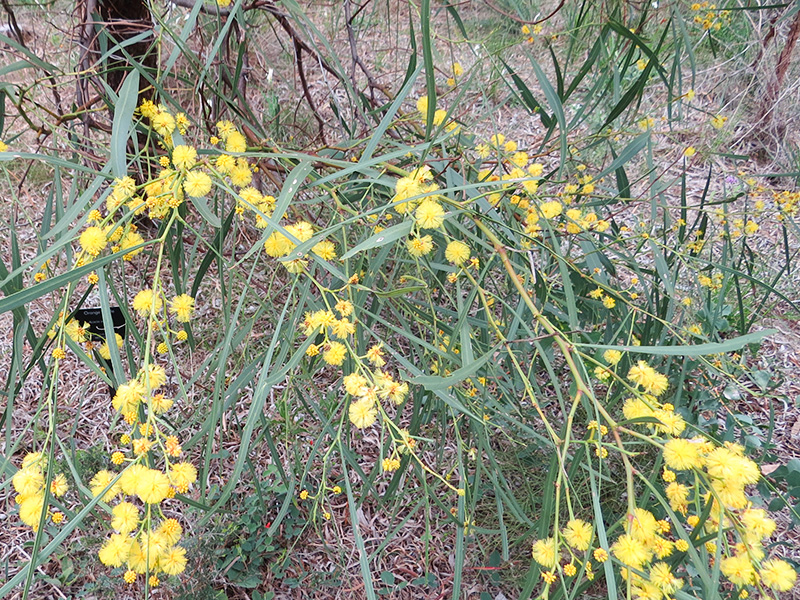
Tropicals, Woody > Acacia > Acacia saligna > Acacia saligna
Acacia saligna
Willow Wattle, Weeping Wattle, Port Jackson Willow, Orange Wattle, Golden-wreath Wattle, Blue-leafed Wattle, Coojong
Origin: Widely distributed throughout the south west corner of Western Australia, extending as far north as the Murchison River, and east to Israelite Bay.
| Family |
| Fabaceae (Leguminosae) |
| Genus |
| Acacia |
| Species |
| saligna |
| Category |
| Tropicals, Woody |
| Type |
| Tree (evergreen), Shrub (deciduous) |
| USDA Hardiness Zone |
| 9 - 11 |
| Canadian Hardiness Zone |
| Cool season protection under glass. |
| Temperature (°F) |
| 19 |
| Height |
| 6 m |
| Spread |
| 6 m |
Photographs
Description and Growing Information
Flowering Period
| General Description |
| A fast-growing species reaching up to a meter a year when young. It is considered to be somewhat invasive, and able to readily and rapidly colonise disturbed land, since it is able to fix nitrogen. |
| Landscape |
| It is used as a landscape ornamental, but also plays a major role in vegetation re-establishment on mine sites, dunes and disturbed land areas throughout its range and into Africa. In landscape restoration projects, it must be used in very controlled situations since it has the tendency to rapidly colonise areas and overwhelm native vegetation. |
| Growth |
| Fast |
| Pests |
| Acacia seed weevil. |
| Leaf Description |
| Leaves are lanceolate to 25 cm in length with a nectary on each of the phyllodes. |
| Flower Description |
| The 1 - 2 cm yellow numerous axillary flowers are hermaphrodite. |
| Fruit Description |
| The 10 - 15 cm flattened, brown pods are constricted between seeds. |
| Propagation |
| Easily and readily by seed with no pre-treatment at 25°C germinating in about four weeks. |
| Ethnobotanical Uses (Disclaimer) |
| The flowers are rich in pollen and can be used in fritters. They also produce a yellow dye while the pods produce a green dye both of which are used in textile production on a local level. The bark contains tannin and is used in the preservation of leather goods. It is harvested for firewood, used as animal fodder and chipped into mulch. It has ornamental value in the landscape as well as uses in landscape reclamation. The plants is covered in thorns which also make it suitable as a hedge or screen to contain livestock. |
